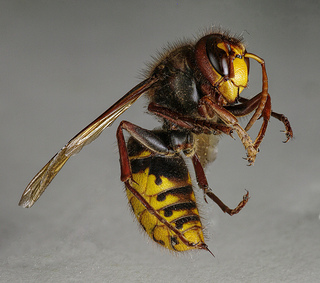Making That Wasp or Bee Sting Feel Better!
By Chris Williams on July 2, 2014.
 Bee Sting Question
Bee Sting Question
It seems like every spring when my kids start playing outside, one of them gets stung by a bee. I’ve always rubbed butter on the sting, but I think that’s probably not the accepted method anymore. What’s the best way to handle a bee sting?—P.P., Bolton MA
Answer
That depends. There are two types of sting reactions: a normal, nonallergic reaction and an allergic reaction in a person with a sting allergy. Most normal sting reactions result in immediate pain, followed by slight swelling and itching or stinging that disappears in a day or so.
On the other hand, a life-threatening allergic reaction can start with symptoms such as nausea, stomach cramps, facial swelling, hives, difficulty breathing or speaking, anxiety, dizziness, rapid heartbeat, or shock. If a person has any of these symptoms, it could be an indication of anaphylactic shock which can kill. Call 911 for emergency help and mention the sting.
We’ll assume that your children have exhibited the usual reactions to the bee (or wasp) stings. What you want to do is make that pain go away. And no, butter is of little use, unless it makes you feel better. For uncomplicated wasp or bee stings, first aid is a simple two-step process.
Remove the Stinger and Ice the Site
- Remove the Stinger – The most important first thing to do is get that stinger out of the skin. It’s not always there, but both bees and yellowjackets usually leave their stinger behind when they pull away after a sting. A yellowjacket’s stinger can continue to inject venom and can give off a pheromone which can attract other wasps. Scrape the stinger off with a fingernail or credit card, or remove it with tweezers.
- Apply Ice – Despite all the other recommendations about what to apply to the site, ice is still the best remedy. Wash the area first, then apply a cold pack or place ice in a zip-lock bag wrapped in a towel. A bag of frozen vegetables will work, too.
By the way, it used to be said that if there was a great deal of swelling after a sting, it could be the indication of an allergic reaction. Now we know that swelling by itself does not indicate an allergic reaction to a sting. A normal sting reaction results in local swelling ranging from a dime-sized welt up to 2-3 inches across. Even substantial swelling is a medical emergency only if the swelling affects the individual’s breathing, for example swelling of the throat or nasal passages.
Photo credit: stilltheguy / Foter / Creative Commons Attribution-NoDerivs 2.0 Generic (CC BY-ND 2.0)